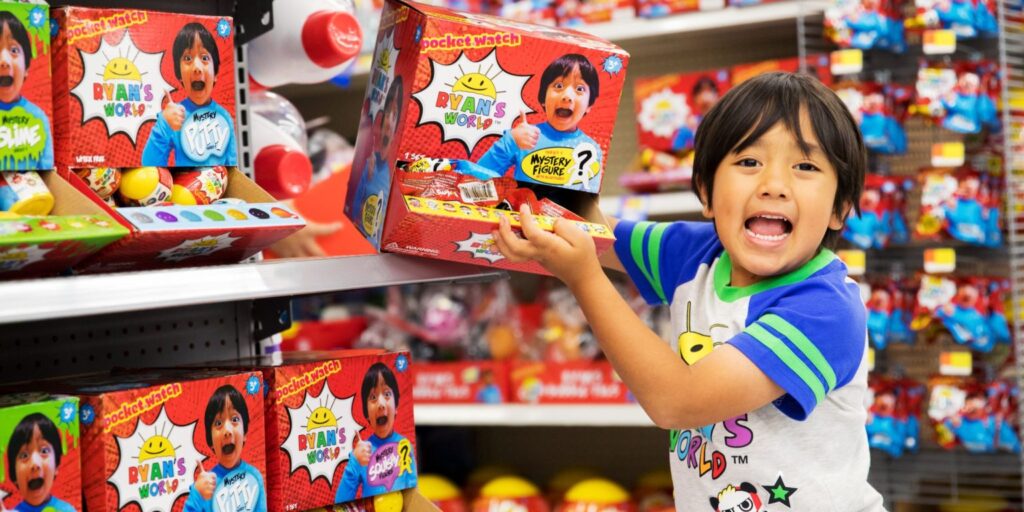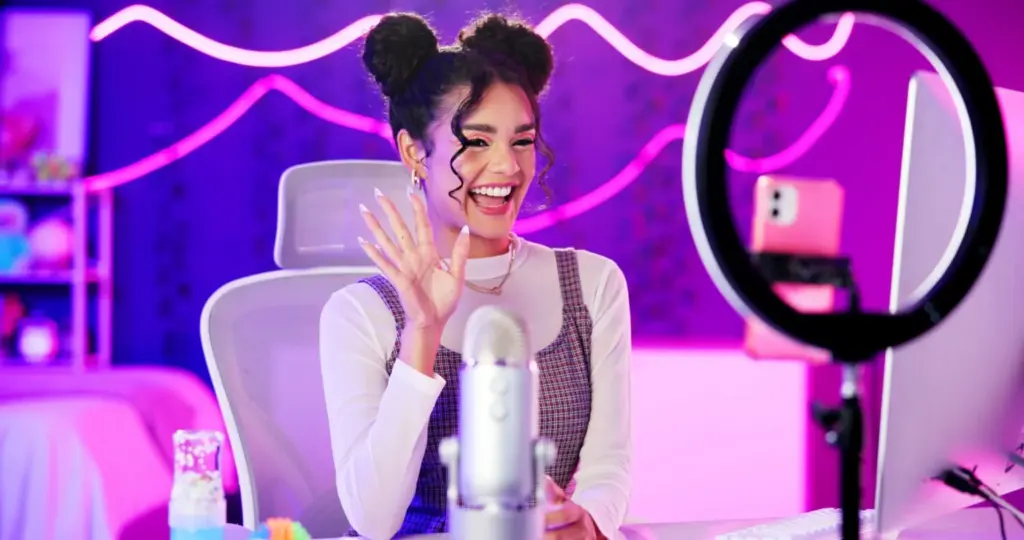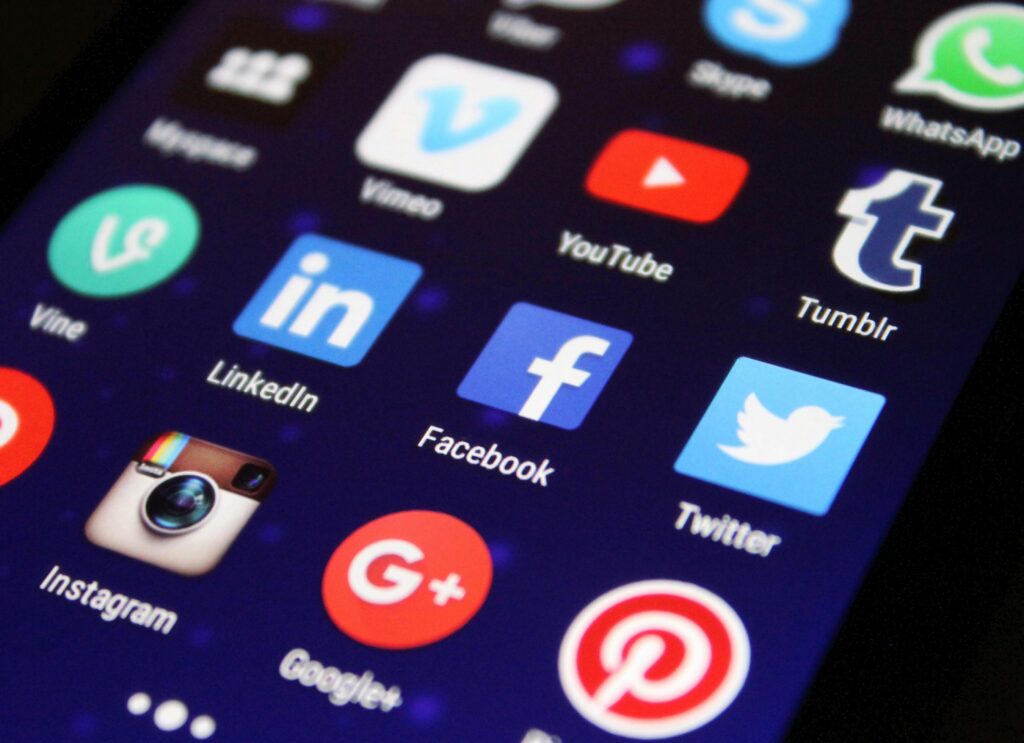Whenever you’re free—(and sometimes when you aren’t!)—it feels like second nature to pull up a video or stream from your favorite content creator. Maybe it’s a travel vlogger taking you somewhere scenic, a gamer pulling off epic wins, or a lifestyle influencer sharing everyday tips.
Over the past few years, content creators like these have woven themselves into everyone’s routines, shaping how people relax, learn, and even shop.
In 2024, content creators have cemented their role in marketing, evolving from passionate hobbyists to full-time professionals who drive brand engagement and influence consumer behavior. Brands now rely heavily on content creators to craft authentic, relatable content that resonates with audiences personally.
As the year ticks over into 2025, this article highlights the latest data behind this shift, revealing trends in monetization, consumer engagement, and platform growth that underscore the growing impact of content creators in people’s lives.
Statistics on the Growth of the Content Creator Economy
The growth of the content creator economy has been striking, with millions of individuals around the world joining this industry and transforming it from a niche hobby into a legitimate and thriving career path. Content creators are now more diverse than ever, covering an expansive range of demographics and platforms.
The shift from part-time content creators to full-time professionals marks a major economic shift, with many content creators now sustaining entire businesses around their content and establishing themselves as digital entrepreneurs.
Expanding the content creator community
With millions joining the content creator economy since 2020, the industry has shifted dramatically, with platforms like YouTube and TikTok drawing vast numbers of individuals. These content creator statistics highlight the shift in how people engage with content, turning once-personal interests into community-driven projects and even lucrative brands.
1. There are currently over 64 million YouTube content creators globally.
2. Over 165 million content creators have joined social media since 2020.
3. 6 in 10 content creators have full-time jobs.
4. 2 in 10 content creators run their own content-based business.
5. There are over 1 million TikTok content creators globally.
6. 35% of content creators have been active for 3-5 years.
Who are the content creators?
Millennials make up the largest demographic in the content creator economy, with Gen Z making inroads as well. While self-identifying influencers are only a small portion of the entire content creator community, their reach is significant, fueling a content creator culture that appeals to diverse audiences.

This demographic shift reflects the evolution of content creation from a niche role into a viable profession for younger generations.
7. Millennials: 42% of content creators
8. Gen Z: 14% of content creators
9. Influencers: 14% of global content creators
Career transitions and commitment
For many content creators, content creation is more than a passion—it’s a career. With content creators hoping to make this a full-time pursuit within a few years, many already rely on it as their main source of income. The industry is also gaining recognition, with content creators increasingly accepted as entrepreneurs by the public and themselves.
10. 63% of part-time content creators expect to go full-time within 2-3 years.
11. 42% of content creators do it as a full-time job.
12. 61% of video content creators believe that being a creator has become a more accepted career choice since they launched their channels.
13. 95% of content creators say their offline networks are aware of their online activities.
14. Over 60% of video content creators claim to make a living from their content.
15. 63% of content creators have no exit plans should their career plans fall through.
16. 45% of full-time content creators say their content creation is the primary source of their household income.
Evolving identity on platforms

As content creators grow their influence, they are increasingly recognized as professionals and entrepreneurs. Many more video creators identify themselves as content creators, while brands overwhelmingly consider them influencers, showcasing a shift in how contnet creators and brands view their partnerships.
However, most content creators see themselves as entrepreneurs rather than primarily trying to influence their followers.
17. Video creators are now identifying more as content creators than in previous years.
18. 97% of brands identify content creators as influencers.
19. 86% of creators see themselves as entrepreneurs.
Consumer Engagement with Content Creators
Content creators play a vital role in influencing consumer engagement and buying behaviors, offering a level of trust and relatability that traditional advertising often struggles to achieve.
Today’s consumers are drawn to content creators who reflect their lifestyles and values, leading them to rely on content creators’ recommendations when making purchasing decisions. The data suggests that relatable content creators, rather than aspirational ones, drive stronger purchasing intent, as consumers increasingly prefer content that feels authentic and aligned with their everyday lives.
Relatable vs. aspirational content creators
Consumers now place a premium on relatability, valuing content creators who reflect genuine lifestyles over those who portray aspirational but less attainable ideals. Many content creators prioritize creative freedom to keep their content authentic, aligning with consumer expectations for transparency.
This focus on authenticity has become a key factor for brands, as relatable content creators often deliver more impactful results than traditional advertising approaches. Overly salesy or disingenuous content can lead to influencer fatigue, canceling out the benefits of the partnership.
20. Social shoppers are 54% more likely to buy from relatable content creators than aspirational ones (39%).
21. 56% of content creators value creative freedom to maintain authenticity.
22. 56% of consumers believe brands should present themselves as more relatable on social media.
23. 58% of consumers feel that ads in creator content fit naturally with other content.
Consumer engagement statistics
The content creators produce can deeply influence consumer interest, often helping them envision how a product fits into their lives. By creating engaging and visually relatable content, creators inspire consumers to learn more about brands and products. Image enhancers play a key role in elevating the visual quality, making the content more captivating and impactful.
This immersive experience extends beyond passive viewing, prompting viewers to seek additional product information and even share recommendations within their circles.
24. 87% of consumers say content featuring personally relevant topics is key
25. 79% of consumers are inspired to explore brands after seeing an ad within creator content, and nearly 70% are motivated to discuss and share that brand with others.
26. 76% of consumers say content helps them more easily see a product in action and visualize its usefulness in their lives.
27. 75% of consumers say ads in creator content enhance product satisfaction.
The impact of AI on trust
With AI-generated content on the rise, consumer trust is facing new challenges. Many consumers express skepticism about AI-created content, as they feel it lacks the personal touch they expect from their favorite content creators.
While some content creators report positive audience reactions to AI usage, the technology raises concerns, particularly around authenticity and deep fakes, potentially impacting how brands engage with consumers through content creator partnerships.
28. 62% of content consumers are less likely to trust and engage with AI-generated content.
29. 74% of content creators cite deep fakes as a major AI-related concern.
30. 56% of content creators report brand requests to use generative AI in content creation, but 40% expect that brand fees will remain the same despite AI integration.
31. However, 71% of creators using AI tools report positive follower reactions. Most creators who use AI tools apply them to create photo and video backgrounds.
The Role of Content Creator Marketing in Brand Growth
As brands look to strengthen consumer engagement and drive growth, content creator marketing has become an increasingly valuable asset. By partnering with content creators, brands can tap into authentic, relatable audiences, expanding their reach in ways traditional advertising often cannot.
Data shows that companies are rapidly increasing their investment in content creator partnerships to maximize their impact, recognizing their ability to boost engagement and revenue effectively.
Investment growth
Brands are investing heavily in content creator marketing due to its proven effectiveness. Many advertisers and content marketing agencies see creator content as a premium, high-quality medium that resonates with audiences, making it a strategic choice for ad budget allocation.
32. 44% of advertisers plan an average of 25% increase in creator content investment throughout 2024.
33. Around 90% of advertisers agree it’s easy to allocate ad budgets to creator content and consider creator advertisements as highly desirable.
34. 58% of advertisers find creator content an engaging advertising environment.
35. 90% of media agencies are confident in measuring creator content’s effectiveness.
Brand trust
Consumers trust creator content more than direct brand advertisements, valuing content creators’ authentic voices. This trust significantly enhances brand awareness and loyalty, as creator-led content establishes an emotional connection that fosters lasting brand relationships.
Collaborating with content creators, therefore, allows brands to earn trust without appearing overly promotional, making ads feel more like recommendations than interruptions.
36. 89% of advertisers feel positive about advertising alongside creator content, and content creator posts are 50% more effective for brand awareness than brand posts.
37. 87% of consumers discover new brands through ads in creator content.
38. 34% of consumers dislike overly self-promotional social media ads.
39. Creator websites are perceived as 67% more trustworthy, 57% more useful, and 56% more credible than social media.
40. Brands seen on content creator websites scored 66% on being seen as fitting in with the reader’s lifestyle.
Impact on purchase behavior
Content creator partnerships lead to measurable boosts in purchase intent and loyalty, with their impact evident across the buyer journey. Creator content helps guide consumers from research to advocacy stages more effectively than studio-produced ads, thanks to creators’ authentic appeal.
As consumers grow connected to both the creator and the brand, they feel more inclined to purchase and recommend products.
41. Creator content boosts purchase intent by 40%.
42. Ads on creator videos are 123% more effective in the research phase, 130% during the advocacy stage, and 1.43x in the loyalty phase.
43. 77% of creator fans feel connected to brands featured in creator content.
44. 70% of consumers made purchasing decisions faster thanks to creator ads, and 72% are likely to purchase again from brands they discover through creator ads.
Monetization Strategies for Content Creators
Content creators are exploring a diverse range of monetization strategies to build sustainable income streams. They’re diversifying to increase earnings potential, with a clear shift toward entrepreneurial ventures like memberships and direct audience contributions.
Top revenue streams
Affiliate commissions and brand deals remain some of the most popular income sources for creators, helping them monetize their influence while promoting products they trust. While only a small fraction of creators achieve high earnings, smaller creators and micro-influencers tend to have more tight-knit communities.
This trend highlights the importance of diversifying income sources, as higher earnings often come from combining multiple revenue streams.
45. 98% of creators earn through affiliate commissions, and 77% rely on brand deals.
46. 50% of creators earn up to $5,000 annually, 17% make $30,000–$100,000, and 7% over $100,000.
47. 70% of high-earning video content creators spend at least 4 hours a day on content creation.
48. 49% of expertise-driven creators earn the most from consulting and 37% from book sales.
Monetization growth
The earnings potential is increasing, with top creators like Mr. Beast exemplifying how creators can generate substantial revenue. Nonetheless, satisfaction with income varies, with only about a third of creators fully content with their earnings.
49. The creator economy is projected to hit $480 billion by 2027.
50. Only 32% of creators are satisfied with their income. Despite that, 74% feel fairly compensated.
51. Mr. Beast (Jimmy Donaldson) leads as the top-earning YouTuber, with $82 million in earnings.
Multiple platforms

Creators understand the importance of having a presence on multiple platforms, though only a fraction of these are financially lucrative.
52. . Full-time content creators manage an average of four platforms, though only 1.9 generate revenue.
53. People who run their content business as a full-time endeavor have an average of only 4,000 followers across all channels.
Challenges Faced by Content Creators
Content creation may seem like a dream job, but the profession has challenges as with any other. Creators constantly work to balance content production demands with the pressures of an “always-on” career. Despite these challenges, only 2% of content creators regret their choice of career.
Burnout and mental health
The mental health toll on creators is significant. Creators often feel compelled to post frequently and interact with followers to maintain visibility, leading to higher stress levels.
54. 75.5% of video creators experience stress or anxiety. Many use outsourcing or delegation to overcome this problem.
55. 25% of content produced had an average emotion score of at least 25%, and only 33% showed a peak emotion score above 50%.
56. One in two influencers prioritizes using social media or creating social content over other restful activities, such as listening to music (31%), exercising (30%), and experiencing nature (27%).
Time management
Being your own boss introduces problems with time management. Balancing the many responsibilities of a content creator can lead to a fragmented schedule, requiring creators to maximize efficiency while staying responsive to audience needs and platform algorithms.
A possible solution for larger creators is tapping into professional third parties for assistance. For example, a social media agency can handle the creator’s accounts on all platforms so they can focus on what they do best.
57. Only 46% of creators’ work time is dedicated to content creation itself. The rest is often split between distribution, marketing, and administrative tasks.
Saturation, competition, and content theft
The rise in content creators has led to an increasingly saturated digital space, intensifying competition and making it challenging for creators to capture and grow their audiences. This crowded environment means that creators often struggle to differentiate their content and reach new viewers.
Compounding this issue, content theft is a pervasive problem; many creators experience their work being used by brands without permission, credit, or compensation. The unauthorized usage not only impacts creators financially but also discourages them by failing to acknowledge their hard work and originality.
58. 64% of content creators say growing an audience is their greatest challenge.
59. 45% of aspiring content creators point to lack of knowledge and time as the biggest barriers to entry
60. 95% of creators believe brands and influencers should seek permission before using their content.
61. 47% of creators have had content used by brands without permission. Of those:
62. 73% weren’t compensated for the unauthorized use of their content.
63. 65% weren’t credited or mentioned for the use of their content
64. Nearly 40% of creators claim to know at least one other creator who has had their original content used by brands without permission.
The Future of Content Creation: Trends to Watch
These new trends are reshaping how creators connect with audiences and produce impactful work. The current focus is on innovation, with tools like AI transforming content creation workflows and formats like short-form video and live streaming gaining momentum.
These shifts cater to shifting viewer preferences but also provide creators with fresh ways to expand their reach and engagement. Staying adaptable to such changes will be essential for creators aiming to future-proof their careers in an ever-competitive industry.
AI integration
As AI tools advance, creators increasingly integrate them into content creation, boosting efficiency and creativity. Many creators use AI to enhance quality, streamline production, and spark new ideas, particularly in video and audio content.
However, some creators remain hesitant, partially due to unfamiliarity with these tools and also to the moral and legal grayness of using AI tools trained on others’ work without permission or compensation.
65. 65% of video creators have already adopted AI tools.
66. 53% of AI users say AI improved content quality, while 52% report increased creativity and saved time.
67. 45% of those not using AI cite lack of familiarity as the main barrier.
Short-form dominance
The dominance of short-form video continues into 2025, with influencers on TikTok and Instagram Reels sustaining immense popularity. Creators are increasingly drawn to this format for its high engagement and broad reach, allowing them to capture attention quickly.
YouTube, Instagram, and TikTok remain the primary platforms, with each serving distinct audience preferences.
68. 66% of creators on TikTok and Instagram prefer image posts, while 59% favor videos.
69. 67% of creators use YouTube, 46% use Instagram, and 18% use TikTok for their primary video distribution.
Live streaming and community building
Live streaming is emerging as a vital tool for community building, with platforms like Twitch and YouTube Live enabling real-time interaction. This format allows creators to foster deeper connections with their audiences through almost unhindered, real-time access that is unique to live streaming.
70. Platforms like Twitch and YouTube Live are growing spaces for live audience engagement.
71. Twitch has maintained over 7 million active streamers since its initial boom in 2020.
A New Age for Brand-Influencer Synergy
The article highlights impactful content creator statistics for brands seeking success in today’s creator economy. As the industry grows, data-driven strategies help marketers make informed decisions, whether by partnering with trusted creators or measuring impact effectively.
Brands can build meaningful, authentic connections that resonate with modern consumers by using data analytics. Visit our social media pages on Facebook, LinkedIn, Twitter, and Instagram






